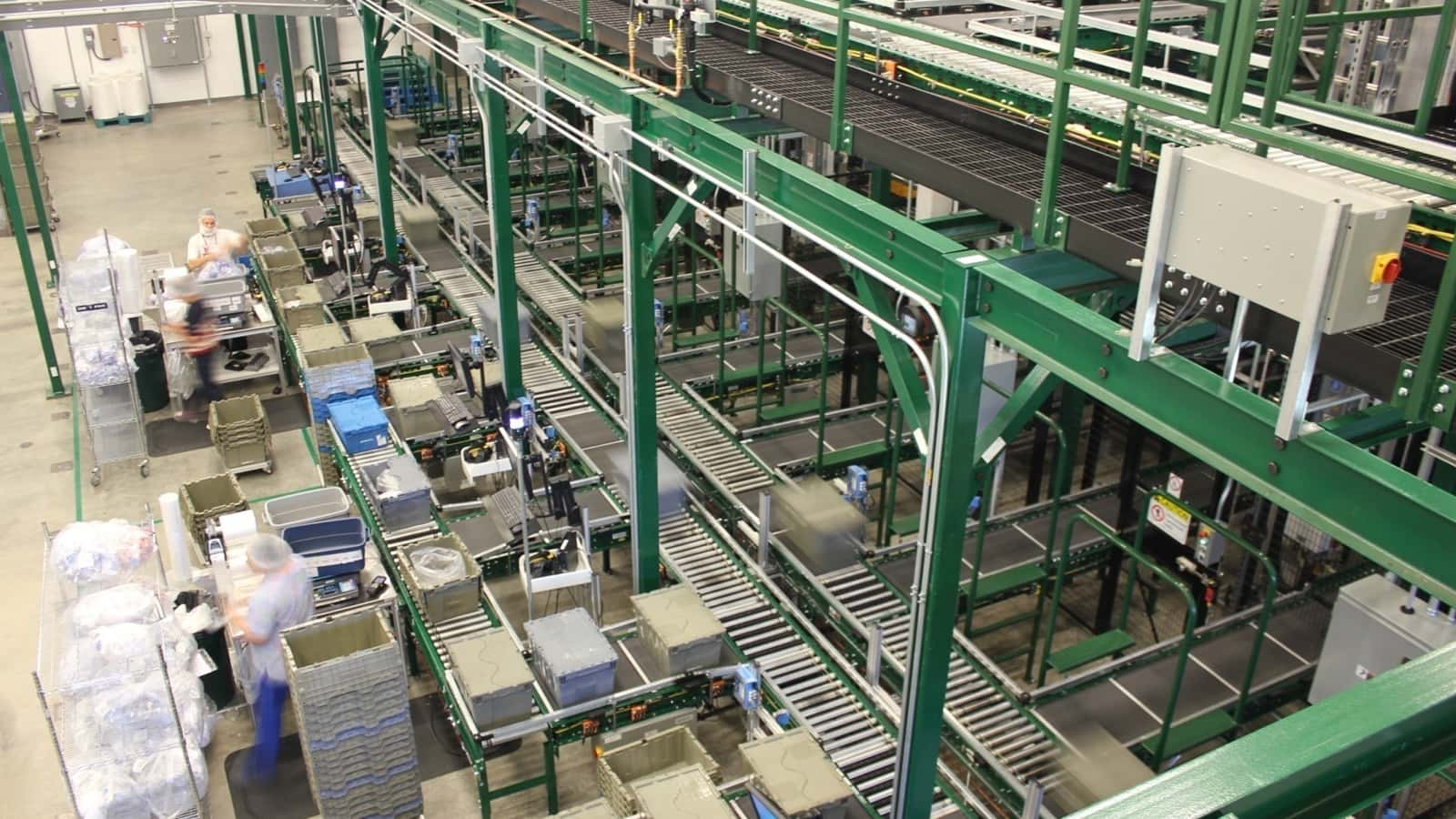Kitting System Facilitates Expansion for Medical Device Manufacturer

Merit Medical Systems, Inc. is a leading manufacturer of medical devices used in diagnostic and interventional cardiology and in radiology procedures. Successful products and growing sales presented the company with challenges at its manufacturing facility in Utah. Merit worked together with Dematic to develop an automated kitting solution that meets their specialised needs.
The Challenges
As a high-tech manufacturer, Merit was already very familiar with the advantages of automation. Its production facility in Utah uses highly automated injection moulding machines to manufacture medical device components.
In fact, it was the increasing efficiency of the automated manufacturing that was creating challenges further down the line in the assembly process.
Assembly was inefficient. Significant time was required to gather components, resulting in inventory control issues.
Merit realised that the process required improvement. They would need help to achieve increased production rates.
Our Solution
To accommodate the increased production and future growth, Merit decided to expand its facility by adding a new final assembly area next to its existing production building.
Merit implemented a kitting solution supported by a Dematic Multishuttle® sub-system. The Multishuttle maximises the use of space and provides controlled access to inventory. Dematic worked with Merit to optimise buffer and workstation processes.
The solution begins as manufactured product is transported in plastic inventory totes from the production area and into the assembly area on a one-way overhead conveyor.
The totes are inducted into the Multishuttle and stored, seven aisles and double-deep. The Multishuttle serves as a work-in-process buffer and is controlled by Dematic software. The distributed control architecture ensures a steady flow.
When inventory is required for assembly, the Multishuttle pulls totes from storage and places them on conveyor loop. The conveyor transports the totes to a right angle transfer and then to the workstation.
The workstations are where workers perform goods-to-person kitting. Workers interact with the Dematic software user interface to request totes of product, acknowledge inventory taken from totes, and send the totes back on the conveyor loop.
The kits are then taken on carts to an area in the facility where other workers assemble the kits into final products. Workers put totes with remaining components back to the conveyor loop to be returned to the Multishuttle.
The Dematic software is a Warehouse Execution System (WES) that interacts with Merit’s Warehouse Management System (WMS). The WMS sends the kit orders to the WES, the WES executes and acknowledges completion back to the WMS
“Merit chose the Dematic Multishuttle to maximise the use of space and provide controlled access to inventory.”
The Results
With the Dematic automated goods-to-person kitting solution, Merit has significantly improved its processes and productivity. Throughput capacity is up, while processing time is down:
- Decreased time required for kitting assembly — from hours to minutes
- Reduced labour required for picking process by 50%
- Improved inventory control and kitting accuracy
- Improved use of facility space with small footprint and high storage density
- Enhanced flexibility with ability to adjust processes and add capacity for future growth
Key Facts
Injection Moulding Operation 24 hours/day
Pieces Produced: 41,000/hour
Totes Produced: up to 375/hour
Finished SKUs Assembled: 60/day
